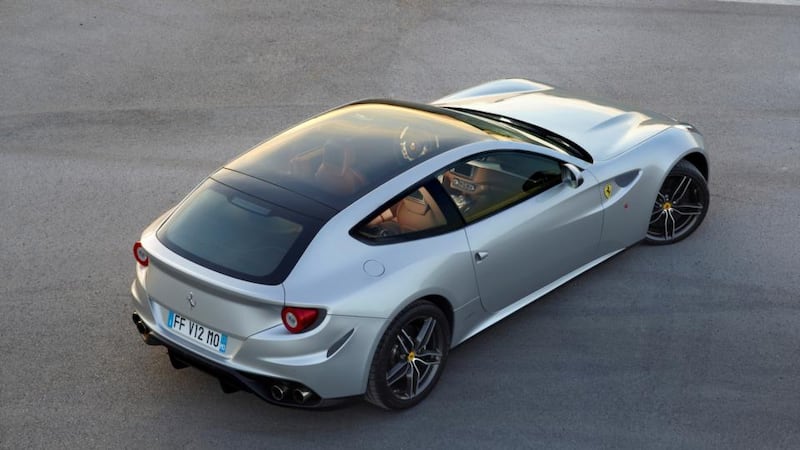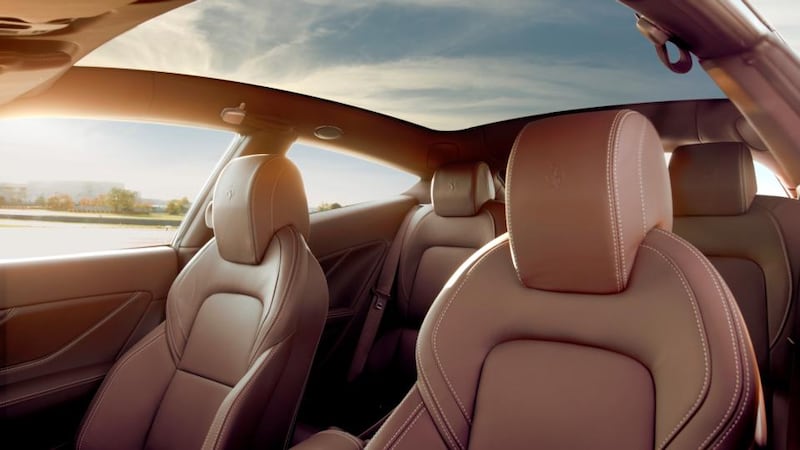The horse whinnied and we all broke into laughter. Sounds like the last line in a children’s tale? Perhaps I should explain.
Ferrari's badge is, of course, the prancing horse, the black stallion rearing up on a yellow background that was apparently bequeathed to Enzo Ferrari by a first World War flying ace because he liked the cut of a young Enzo's jib. With a V12-engined Ferrari FF on test, clearly the only thing to do was call on friends and offer them a spin in automotive royalty.
Approaching a roundabout, we noticed that we were behind a horse box, and its equine occupant was checking out our car’s badge in an approving manner. Stopped at the roundabout, the FF’s mighty 6.3-litre engine shut it self down to conserve fuel. And then I took my foot off the brake to re-engage everything, at which point the engine fired back up with a filthy blare of revs, making it sound like an F1 car about to pull out of the pitlane.


At this sound, the horse whinnied and we all broke into laughter. I’m not sure if the horse was impressed or startled by his 660-odd Italian mechanical compatriots, but either way, it just seemed like the perfect piece of roadside theatre.
Theatre is, of course, central to the Ferrari myth. Just as the horse on the badge is rearing up on its hind legs, so Ferrari struts its way across the automotive firmament with a combination of swagger and the skills to back it up. Think Ferrari and you automatically think low, fast, loud, red and highly-strung – some of which this FF is and some of which, rather notably, it isn’t.
Break with tradition
It's that most unfashionable of Ferraris, the four-seat GT version, and in many ways it's the most revolutionary car ever to come out of the gates of the Maranello factory. After all, a mid-engined 458 Italia or a 730hp F12 Berlinetta are merely updates of classic Ferrari tropes.
The FF is a break with tradition, not in terms of offering four seats and a big boot. (Both the preceding 612 Scaglietti and the 456 could take four adults at a pinch, two adults and two kids easily, and both had decent load areas.) The FF does go that bit farther, though, by offering a 450-litre boot with a hatchback and folding rear seats, making it truly practical. You can get a weekly shop in without disturbing the rear-seat occupants, although quite how many FF owners will use one for the Tesco run is somewhat debatable.
What is truly revolutionary, for a Ferrari, is the fact that the FF is four-wheel-drive. Now, this is where it gets complicated, and I’m going to try to explain it in a manner that doesn’t make me sound like a Junior Cert metalwork teacher. The FF’s V12 sends most of its power, most of the time, to the rear wheels, powering through a seven-speed dual-clutch gearbox that you can shift via the steering wheel paddles. But, so that Ferrari doesn’t need to raise the engine up to accommodate a transfer case and a second props haft running towards the front (as would be the case in a traditional 4WD car) there’s another, small two-speed gearbox mounted at the front of the engine, powering the front wheels. Well, it powers the front in the first four gears anyway, and then only up to 30 per cent of the engine’s massive grunt goes forward, but it’s enough to make the FF feel incredibly friendly.
Yes, huge, arm-flailing opposite lock power slides are available on tap (what did you expect from a 660hp supercar?), but most of the time the FF is what the US Air Force would refer to as a multi-role airframe: it basically does everything well. Want to cruise in total comfort and near-silence for mile after mile? The FF can do that. Want to shrug off the worst rain and howling wind that January can throw at you? Yup, not a problem. Want to accelerate from a standstill in a manner that feels and sounds as if you've been rammed up the boot by a 747 at takeoff thrust while the Roma Sinfonietta plays its heart out in the boot? Err, yes, just a bit.
Fast and composed
To say that the FF is staggeringly fast and astonishingly composed feels almost redundant simply because it is so much of both. But what leaves the biggest impression is its very ordinariness : the fact that you can see out of it, the fact that it's relatively easy to park, the fact that it's comfortable and refined and, at 15 litres per 100km, not so thirsty as to be outrageous. That multi-role ability doesn't come cheap, though. Sitting in the showroom at Charles Hurst Ferrari in Belfast, our test car would cost you £292,000 including its myriad options. That means a home price of around €600,000.
For one car that can kinda do anything (kids, snow, speed), that still seems jaw-droppingly expensive. But the horses in your vicinity should be well impressed, so there’s that.












